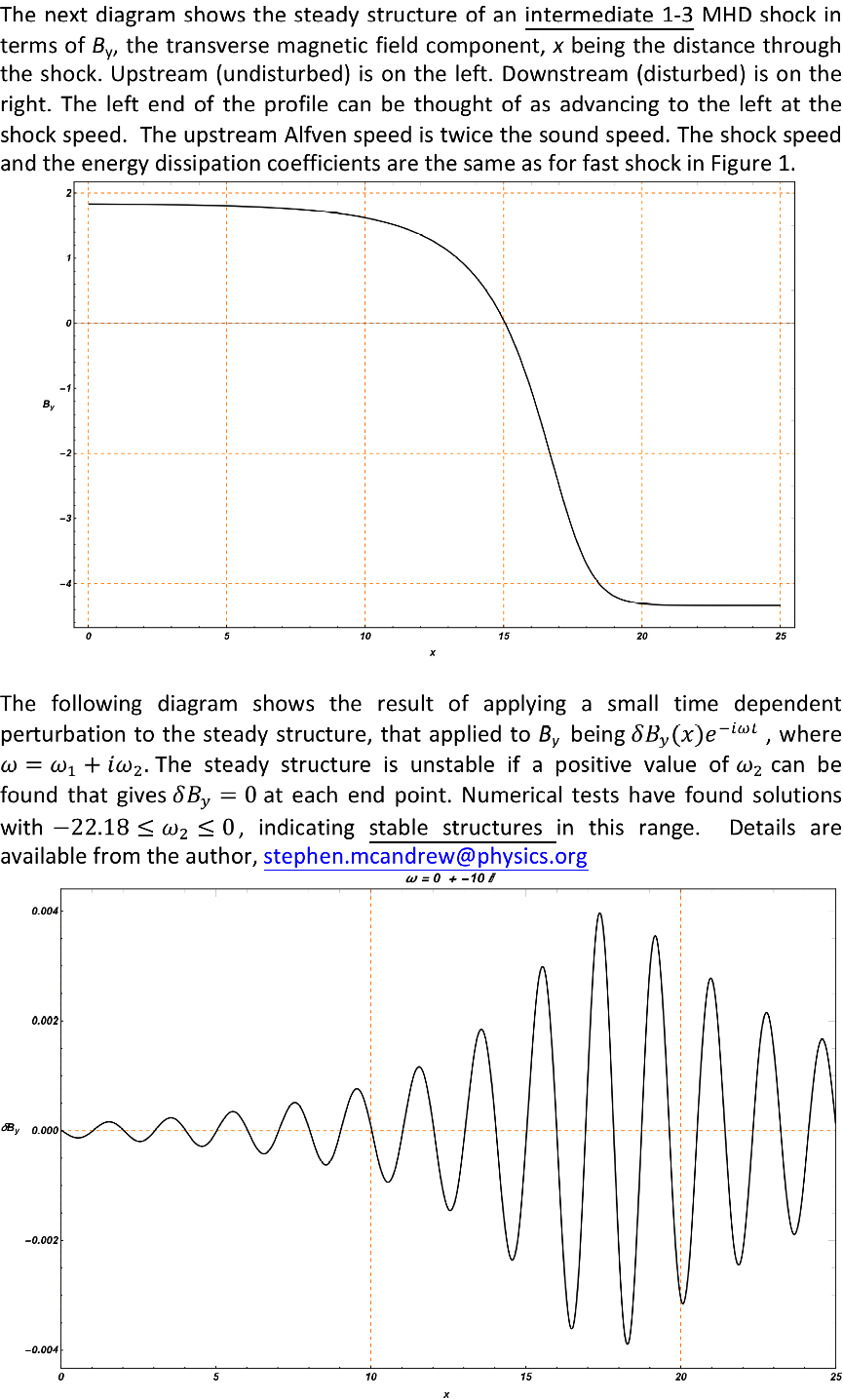This page is a repository of MHD shock structures and their linear stability analysis calculated by Dr Stephen Mc Andrew. In my PhD thesis, http://hdl.handle.net/1959.14/1283859 , shock structures were computed in the case where energy dissipation in the shock was due entirely to the electrical resistivity of the medium.
Following examiner comments, to which the author gives his thanks, the study is now being extended with shock structures and their linear stability being computed including the effects of electrical resistivity, fluid viscosity and thermal conduction to the medium.
Shock structures and their linear stability analyses will be added to this site as each case is studied. The next case to be posted is that of a perpendicular shock with dissipation due to electrical resistivity only. Analysis has shown that in this case the steady structure is unstable to first order changes in the flow variables.
Summary
Three MHD shocks are listed below. Each is calculated using the same values representing the dissipative effects of electrical resistivity and fluid viscosity only. The first is a fast shock, the second is an intermediate 1->3 shock and the third is an intermediate 1-> 4 shock.
The results of the perturbation analysis are that the fast shock showed stability for all tested perturbing frequencies, the intermediate shocks showed stability for a range of frequencies. No unstable modes were found for these three shocks.
Background
The single fluid MHD equations were linearised and a small time dependent harmonic perturbation was applied to each of the seven flow variables. The ODEs describing the perturbed variables were numerically integrated through the shock and a shooting method was used to search for solutions to the boundary value problem where the perturbations were zero at the end points. This perturbation method is a numerical application of the analytical approach used by Gardner and Kruskal (Phys. Fluids, 7, 5, May 1964, p 700) which was applied to parallel and perpendicular shocks in a compressible, inviscid, perfectly conducting fluid in a magnetic field.
If a solution of the boundary value problem belongs to a negative value of the imaginary part of ω the solution represents a decaying vibration and the steady structure is stable to small perturbations. A zero value for the imaginary part of ω represents an oscillating solution and the steady structure is considered stable. A positive value for the imaginary part of ω causes a growing perturbation in time indicating the steady structure is unstable.
Starting Values
The chosen finite values of the dissipation coefficients (electrical resistivity, fluid viscosity and thermal conductivity) allow shock transitions to be formed at the particular upstream conditions being examined. The values were chosen so that each shock type being studied is stable to small changes in these dissipation values. The dissipation values are constant during the following perturbation analysis.
Intellectual Property
The material presented here is a new study following from the author’s PhD thesis which was accepted by Macquarie University in 2021. All material presented on this website is copyrighted as such by the author and may not be used for general distribution. It may be used for study, teaching or research provided that permission is sought and given by the author and that acknowledgement is given by including the name of the author and URL of this site with any produced item.




